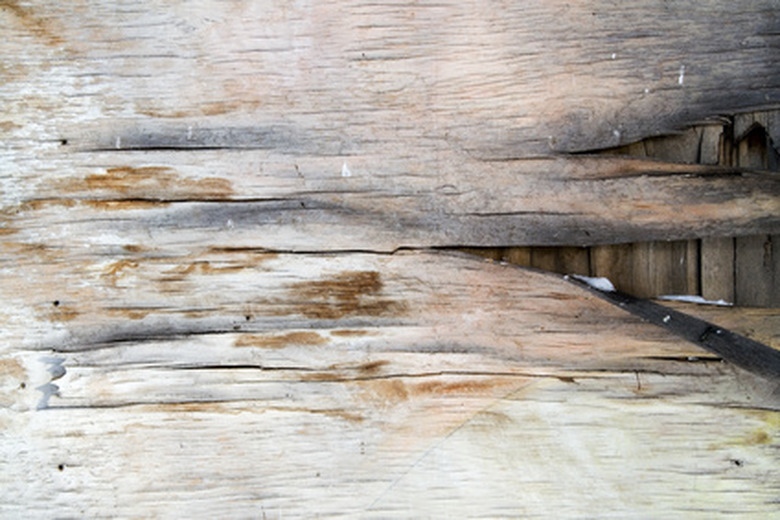How To Repair Plywood
Things Needed
-
Router
-
Wood chisel
-
Hammer
-
Measuring tape
-
Masking tape
-
Sander
-
Staple gun
-
Soft-bristle brush
-
Wood epoxy
-
Matching plywood (optional)
-
Fiberglass tape
Plywood is made with layers of wood veneer, laid with the grains at approximately right angles and then glued together. The counter-posed grains and strong inter-sheet adhesive give this manufactured wood material its strength and resistance to warping. Plywood can be part of a wall, floor, ceiling, roof or even a boat. It can become scratched, cut, gouged, dented, blistered, separated or rotted. If damage to the plywood is not so extensive that it requires complete replacement, the damaged areas can be repaired.
Step 1
Cut off blistered or peeled laminates from the main board, using the router. Cut off the blister or peel it completely back until the damaged laminate is flush with the main board. Sand the edge of the cut until the edge tapers onto the surface of the underlying laminate.
Step 2
Cut out patches for holes from identical-thickness plywood using the coping saw. Cut out the patch border approximately 1 inch larger than the hole you are patching. Rout or sand an upward-facing 1/2-inch bevel along the edge of the hole. Rout or sand a downward-facing 1/2-inch bevel on the patch. Make the bevel gradual, testing the fit frequently to ensure the closest fit possible until the patch fits in the hole with the patch and main board surfaces flush.
Step 3
Brush clean all cut and sanded surfaces. Mix the wood epoxy a little at a time. The epoxy "sets up" within minutes, and if you mix too much, it will harden before you can apply it.
Step 4
Mask the edges of you repair areas with the masking tape to ensure the epoxy doesn't get on your undamaged surfaces. Fill in cut away peels and blisters with epoxy using the putty knife. Smooth the surface of the epoxy to make it level and flush with the original surface. Let the epoxy dry for 2 days.
Step 5
Apply a bead of epoxy to the upward-facing beveled surface of the holes. Press the patch down into the hole until the patch surface is flush with the rest of the board. Scrape the expressed excess off of the surface with the putty knife. Staple the edges of the patch on four sides, holding the staple gun off of the surface a bit. The staples are only to secure the patch for drying, and holding off will leave a bit of the staple exposed for removal after the epoxy is dry. Let the epoxy dry for 2 days. For boat hull plywood, cover the dried patch or repair with fiberglass tape before refinishing.
